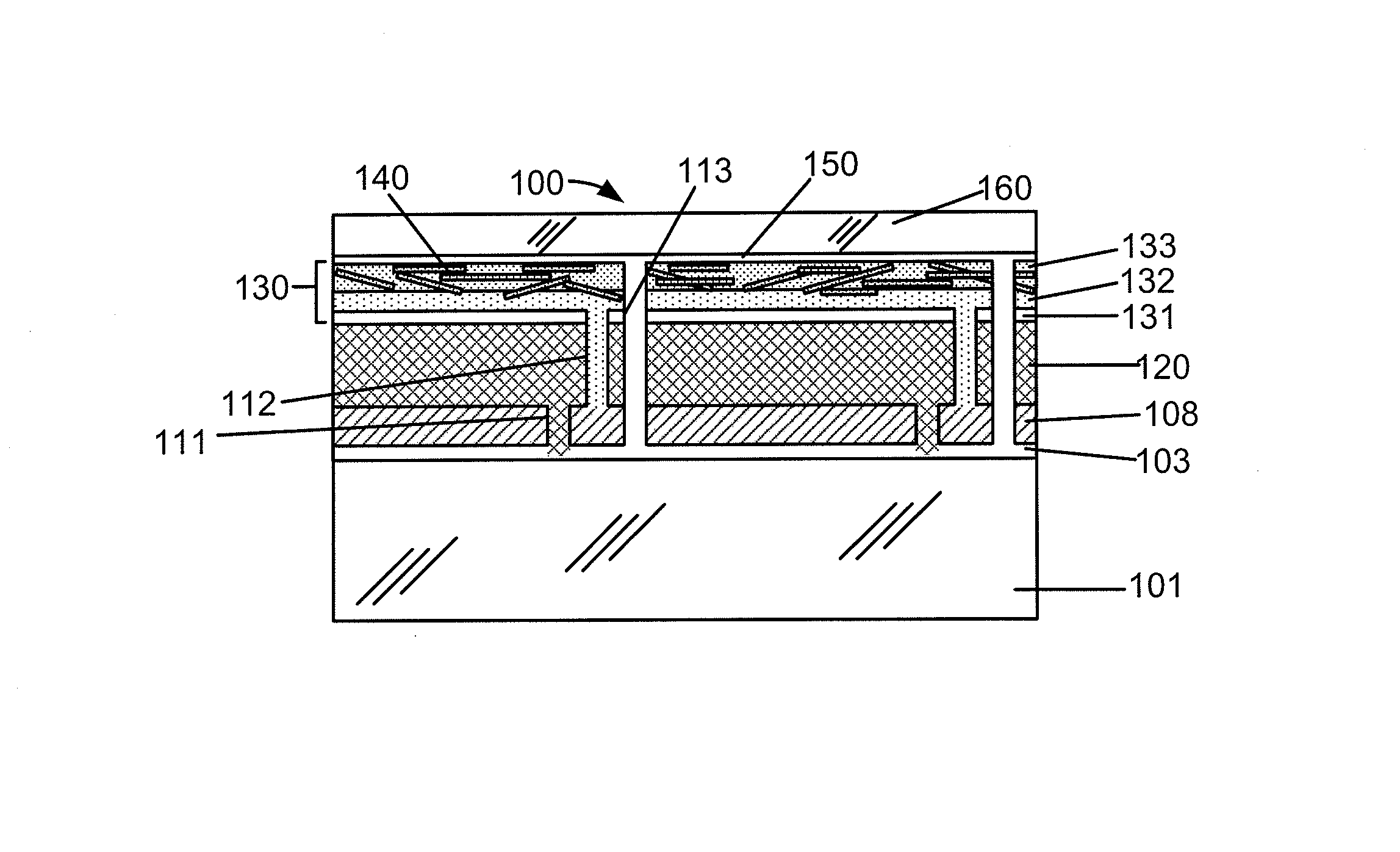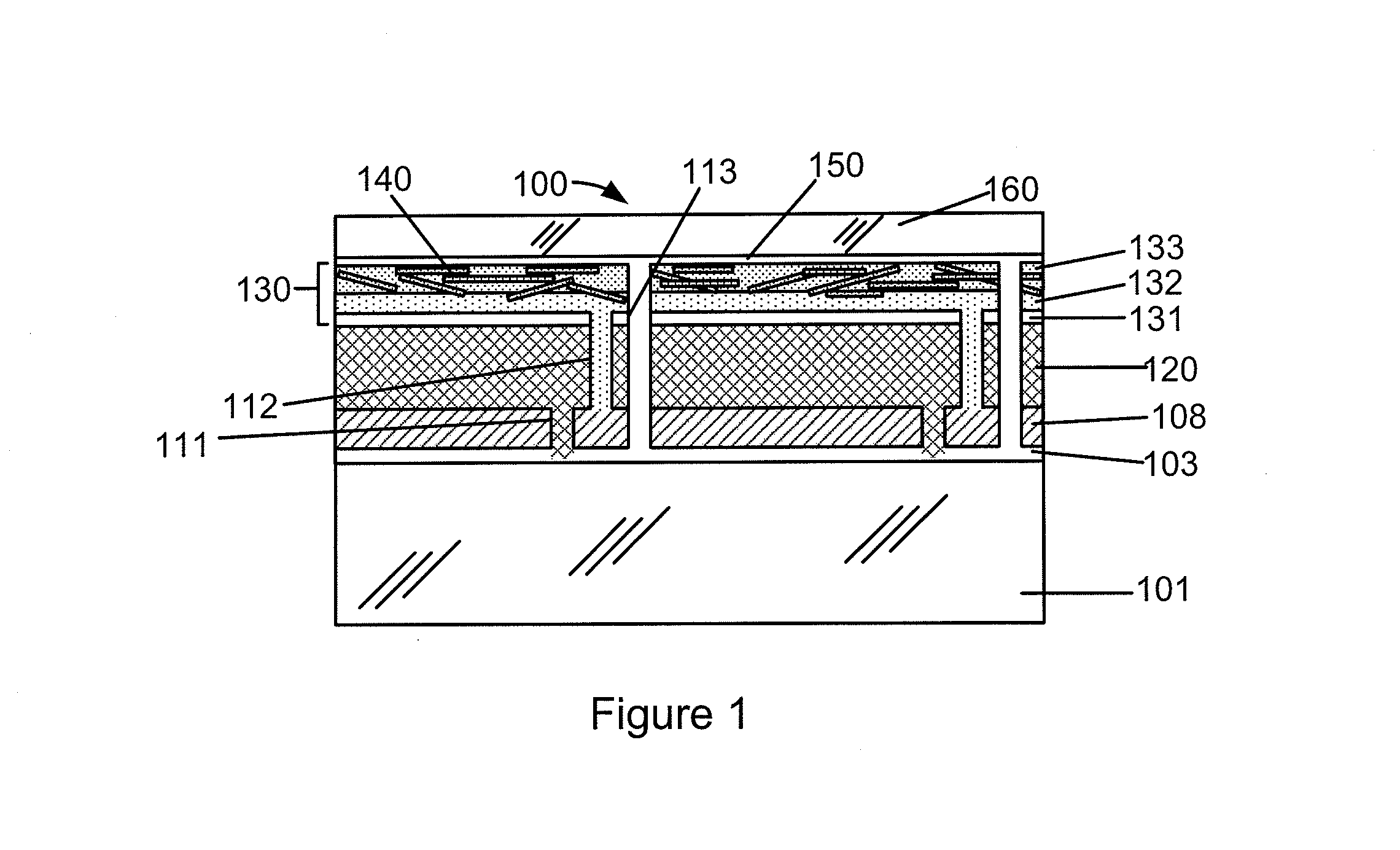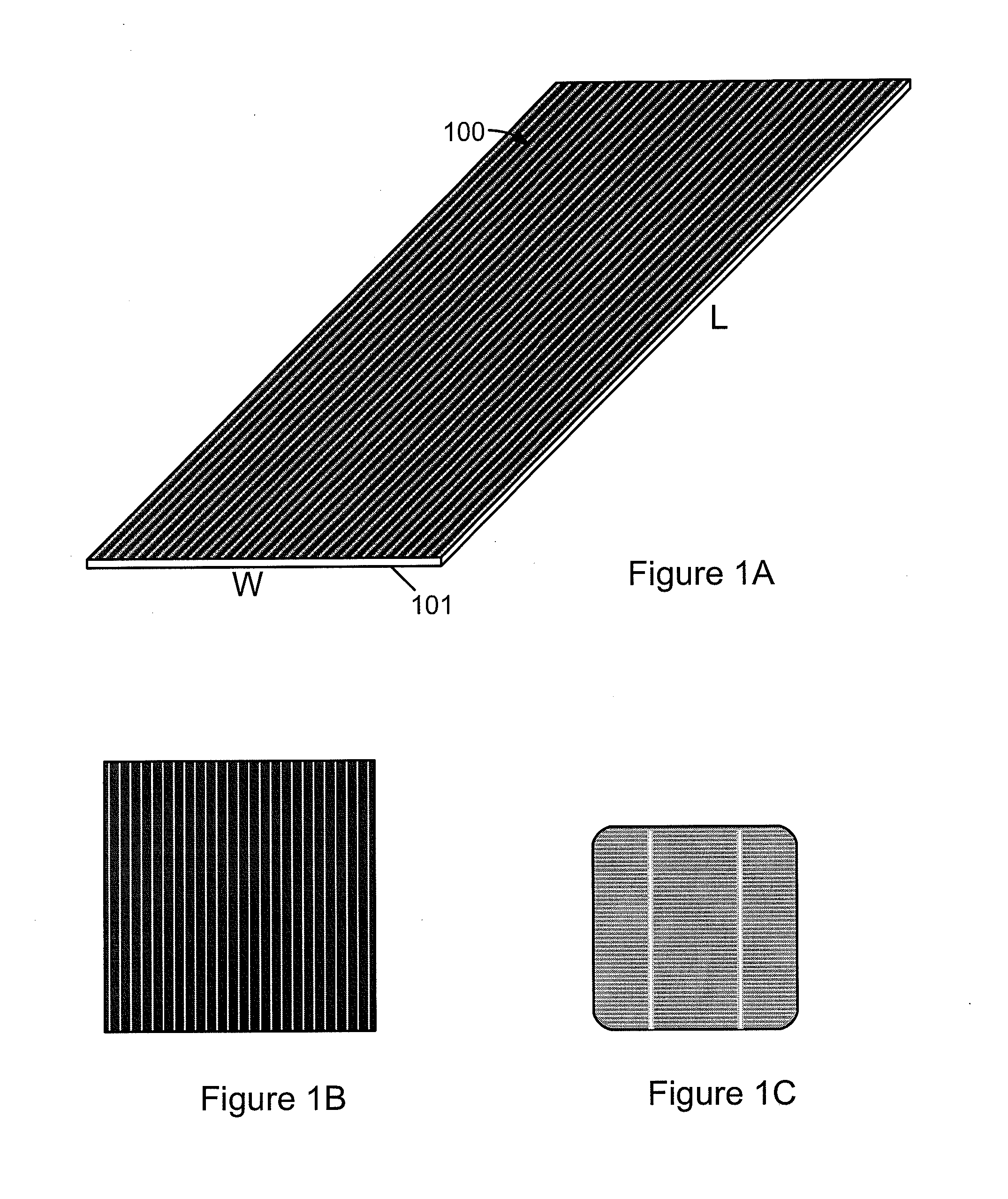Nanowire enhanced transparent conductive oxide for thin film photovoltaic devices
a technology of transparent conductive oxide and nanowires, which is applied in the field of nanowire enhanced transparent conductive oxide for thin film photovoltaic devices, can solve the problems of tens of microns range, conductive wire size, and past techniques, and achieve high conductivity materials, facilitate scattering of incident electromagnetic radiation, and high efficiency
- Summary
- Abstract
- Description
- Claims
- Application Information
AI Technical Summary
Benefits of technology
Problems solved by technology
Method used
Image
Examples
Embodiment Construction
[0020]FIG. 1 is a cross-section view of a thin-film photovoltaic device with a nanowire-enhanced transparent conductive oxide (TCO) film according to an embodiment of the invention. The thin-film photovoltaic device 100 is formed through thin-film manufacturing processes including forming a nanowire-enhanced optically transparent conductive electrode over the photovoltaic absorber material. As shown, the thin-film photovoltaic device 100 includes cells patterned from a series of continuous thin films formed on a substrate structure 101, including at least a barrier later 103, a bottom electrode 110, an absorber material 120, a top electrode 130, and a cap glass 160. As known, transparent conductive oxide (TCO) material is widely used for forming a thin-film electrode as the top electrode of a photovoltaic cell. By incorporation of high conductivity nanowires into the TCO film, enhancement of lateral conductivity without appreciable reduction in optical transmission is achieved.
[0021...
PUM
| Property | Measurement | Unit |
|---|---|---|
| transparent | aaaaa | aaaaa |
| sheet resistivity | aaaaa | aaaaa |
| optical transparency | aaaaa | aaaaa |
Abstract
Description
Claims
Application Information
 Login to View More
Login to View More - R&D
- Intellectual Property
- Life Sciences
- Materials
- Tech Scout
- Unparalleled Data Quality
- Higher Quality Content
- 60% Fewer Hallucinations
Browse by: Latest US Patents, China's latest patents, Technical Efficacy Thesaurus, Application Domain, Technology Topic, Popular Technical Reports.
© 2025 PatSnap. All rights reserved.Legal|Privacy policy|Modern Slavery Act Transparency Statement|Sitemap|About US| Contact US: help@patsnap.com



